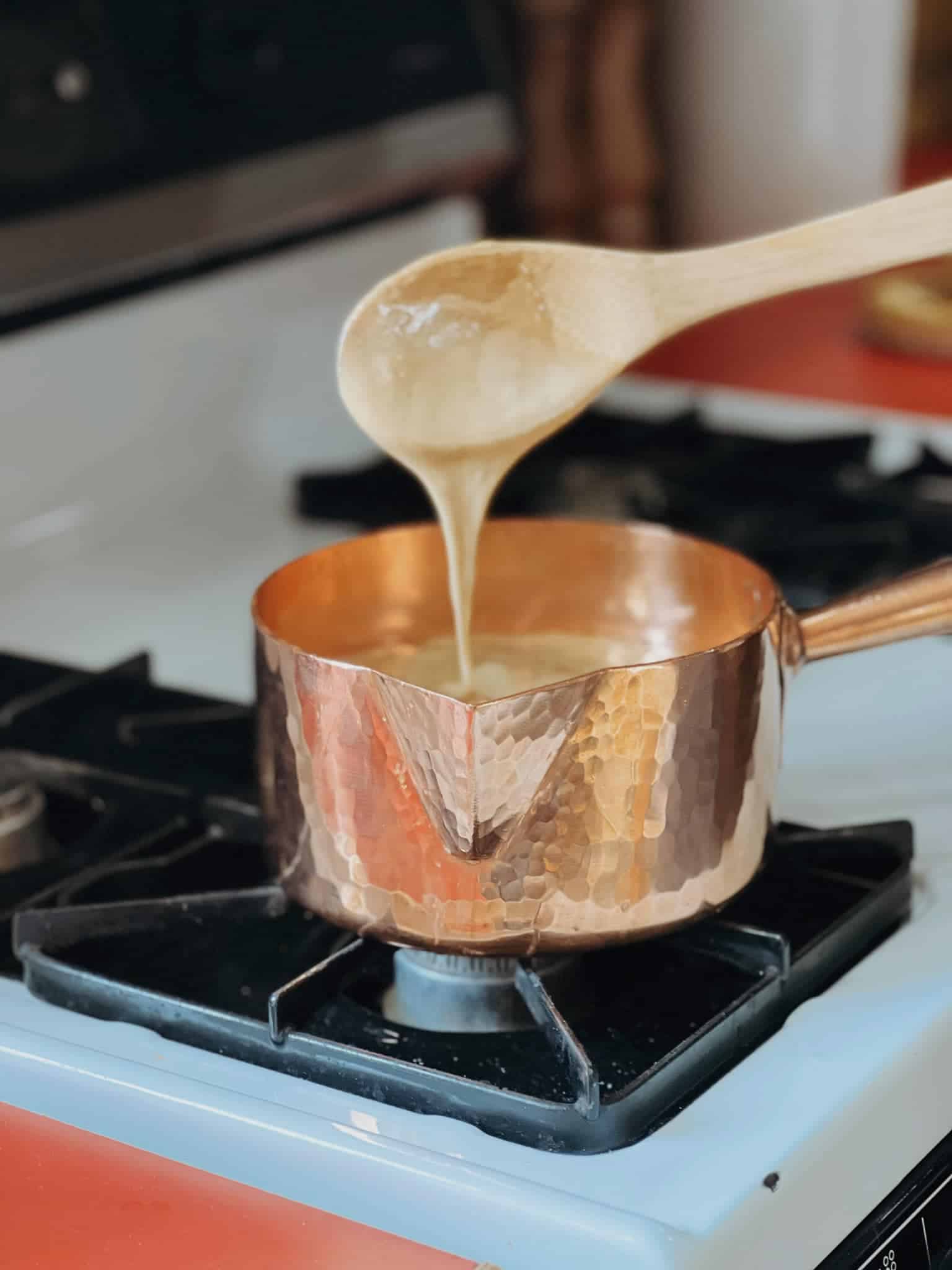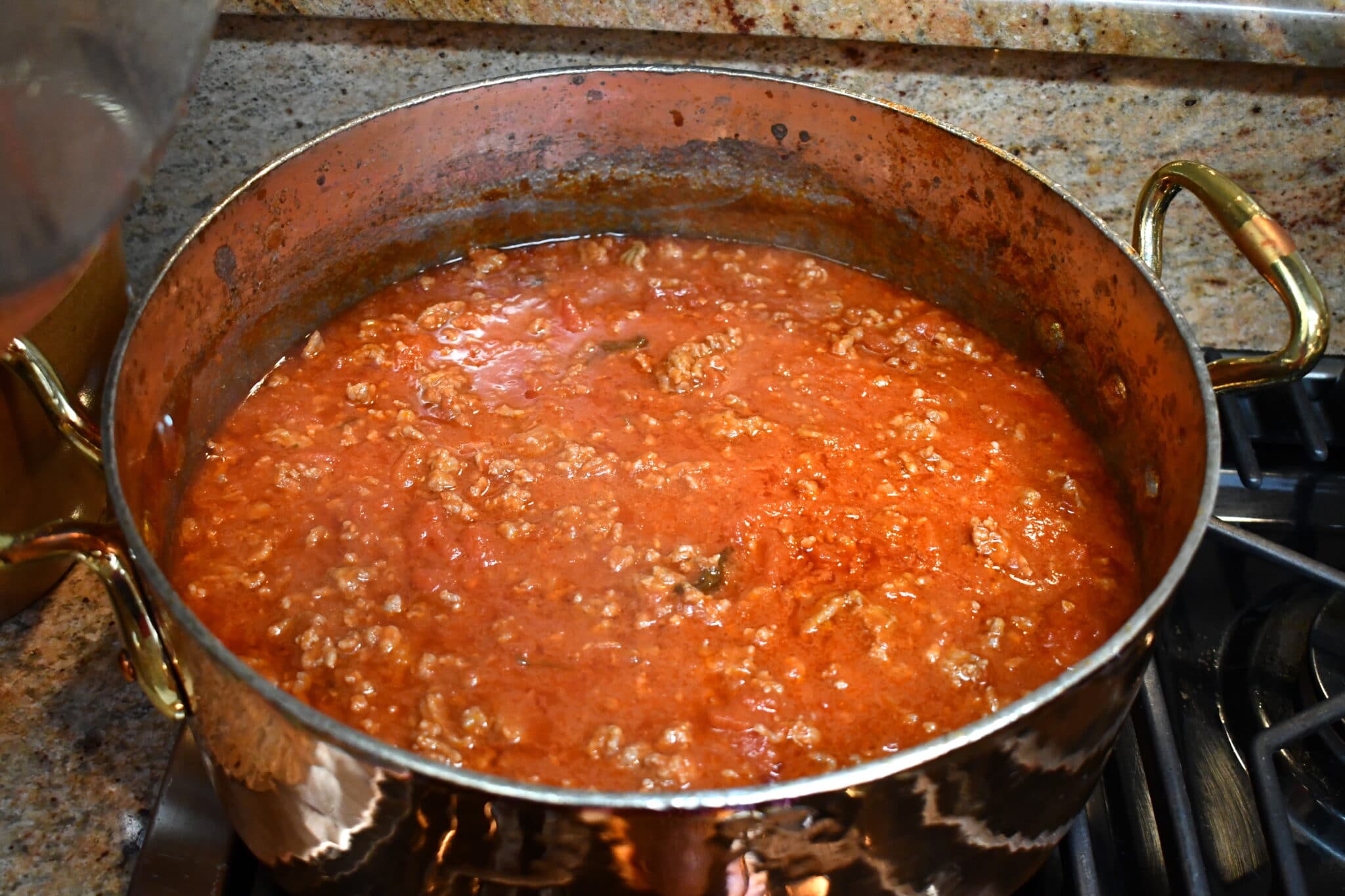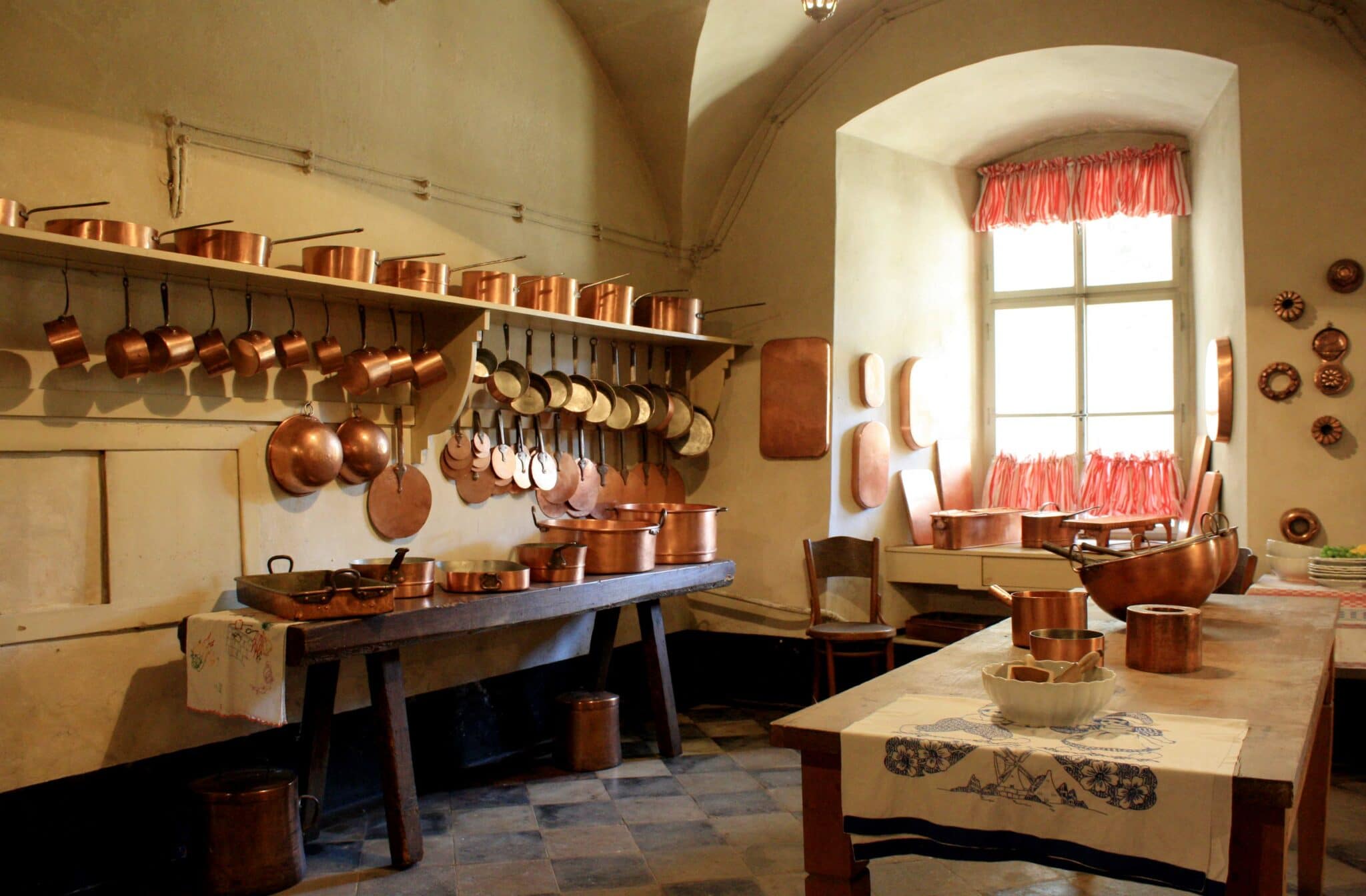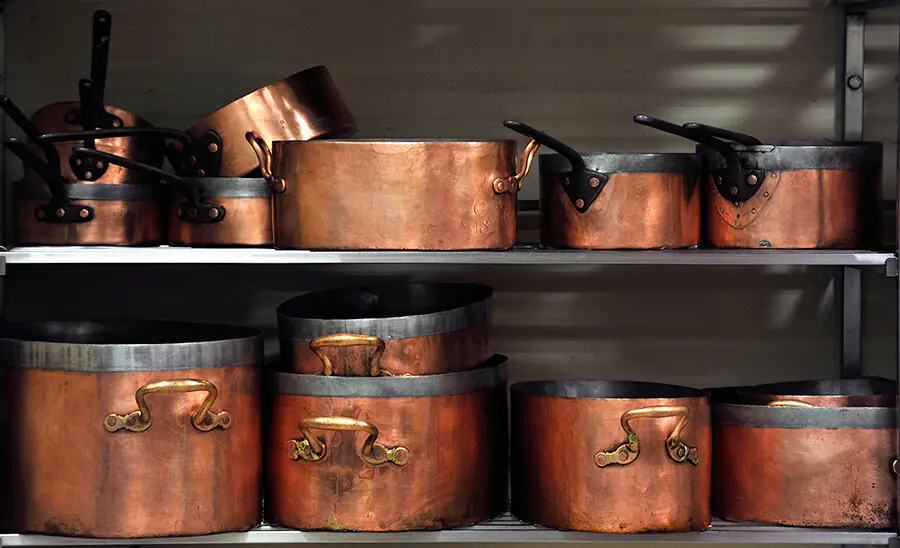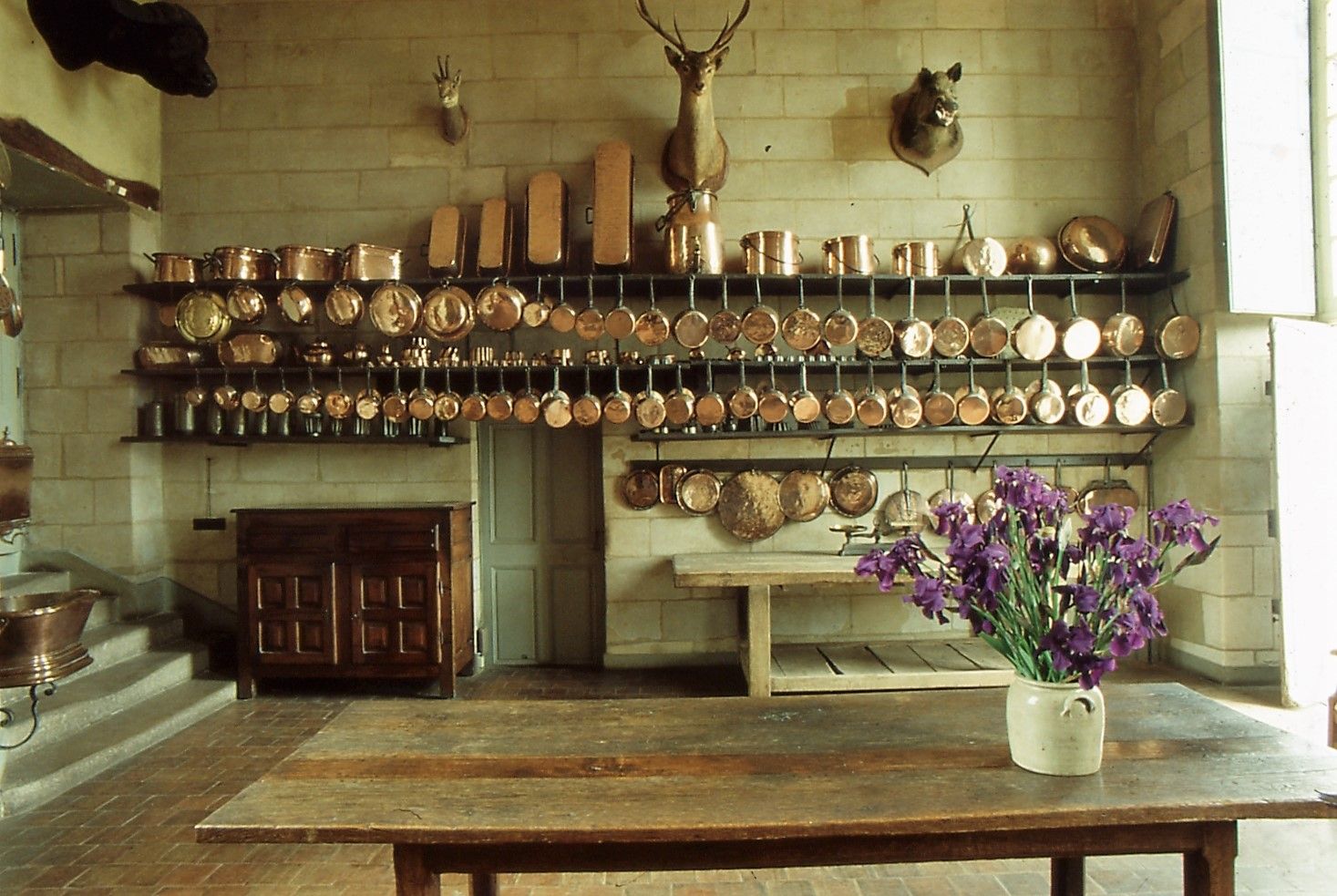Readers, let’s try a useful thought experiment.
You have likely seen this meme before: “If you were cast away on a desert island, what ten things would you bring with you?”
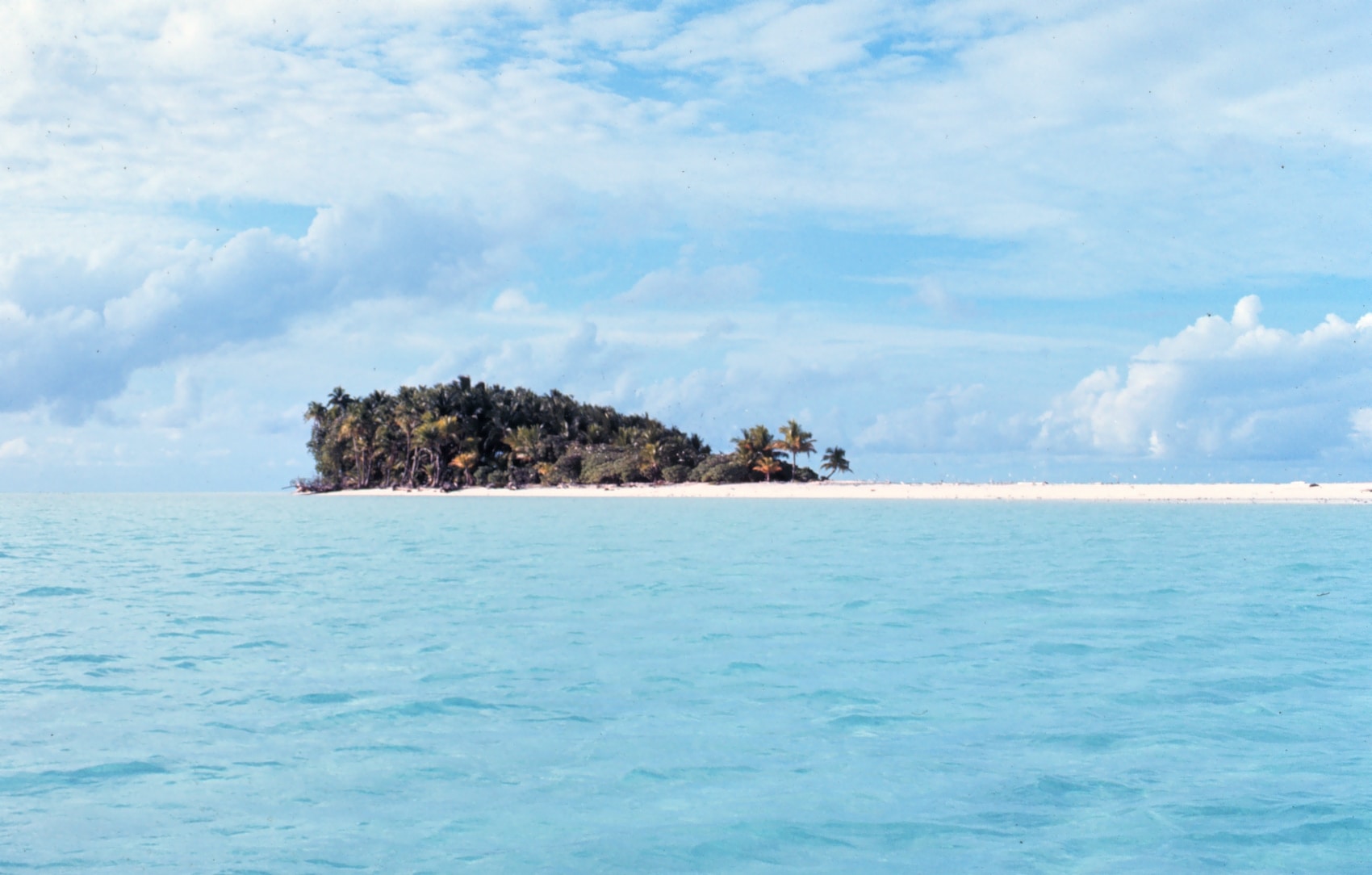
It’s an outlandish framing for a useful question: What separates true necessities from mere conveniences? The concept extends to books, music, even foods. What do we really love, that delight us again and again? An artificial limit — three, or five, or ten — focuses the mind and the answers become revealing and educational.
Reader Roger W. proposed we try this exercise within our copper-loving community.
So here’s the question: If you had to reduce your batterie de cuisine to ten pieces (or fewer), which would make the cut for you, and why?
But let’s not be barbaric — the intention here is not to constrain ourselves to a literal desert island scenario. Tinned copper is fine (even though finding a retinner on a desert island would be a challenge indeed!). Lids are included and don’t count towards your limit of 10. Don’t worry about things like teapots and baking sheets and garlic presses and ancillary things like that. Keep it simple: What pots and pans would you want for your kitchen, cooking for your family and friends and preferences?
And let me be clear: While this is a copper cookware community, don’t constrain your choices to copper! I’d love to learn about your MVPs — most versatile pieces — no matter what they are.
I’ll start it off.
VFC
I would choose these ten pieces:
- 14cm 3mm tinned copper Mauviel-for-Gaillard saucepan
- 18cm 3mm tinned copper Jules Gaillard saucepan
- 31cm 3mm tinned copper skillet with helper handle
- 28cm 2.5mm copper-steel bimetal Bourgeat sauteuse bombée
- 27cm 3.8mm tinned copper Gaillard sauté
- 28cm 4mm tinned copper stewpot
- Super-heavy 30cm 4mm+ tinned copper stewpot
- 34cm 4mm tinned copper Dehillerin rondeau, the first piece I ever bought
- 24cm 3.5mm aluminum stockpot
- 35cm 4mm carbon steel paella pan (mine is made by Darto)
I’m not choosing all my sentimental favorite pieces but instead those shapes and sizes that I feel would give me the most flexibility, and then selecting the heaviest example I have. Most nights I cook for two but occasionally I entertain for dinner parties from six to twelve people. What I need are a few small “daily use” pieces as well as a few larger ones that can scale up or down as needed. For me, two saucepans and a large skillet can handle a lot of cooking tasks. I’m also throwing in a super-thick 3.8mm 27cm sauté pan, an antique stamped for Gaillard with a wrought iron handle, for two reasons: first, because to my mind thick sauté pans represent the perfect fusion of French cooking form with thick copper function, and second, because I’d be too sad not to have antique copper to use.
I prefer cooking on tin but I’ve included my steel-lined Bourgeat sauteuse bombée because I love its shape and also because I like to have a steel-lined piece for higher-heat applications. Along those lines, I’m also including one carbon steel piece — a large-diameter paella pan — as an all-purpose bulletproof high-temperature searing surface. I’m also throwing in a 24cm stockpot — I chose my beloved aluminum one for its light weight — because it’s a useful size for boiling a lot of water for pasta and, yes, making stock.
Is this enough to enable me to tackle every recipe that’s out there? Of course not. But for the cook I am today, with the skills and requirements I have now, these pieces would set me up nicely. And while I know full well that my choices would commit me to a lifetime of slinging heavy copper around on the daily, I wouldn’t be VFC if I didn’t!
Roger W.
At first thought ten pieces of cookware seems quite a lot, when I first set up home I managed with rather less than that. When I began compiling my list it is actually rather difficult. One can of course prepare a meal in a single pan but it is restrictive and life is easier when you have the ideal tools.

- A circa 1900 18cm ordinary saucepan with a thick base & walls slightly taller than the modern equivalent.
- Peter BRUX 18cm casserole russe. I find this is the diameter I use most & this pan is just right for rice or pasta for two people.
- Vintage 15cm ordinary saucepan, an odd size which will stand in for 14 or 16cm pans since I can’t take both. Since I have owned this pan making scrambled eggs in anything else just seems wrong.
- 22cm ordinary saucepan, great for making curry and big enough to boil a 1Kg piece of gammon.
- 32cm E. Bonnet plat à sauté, a good big multipurpose frying surface and ideal for paella.
- 30cm Matfer (Mauviel) Windsor which I generally abuse as a Wok. Big enough to use as a sauté and one could even use it as a reduction pan.
- A smaller Windsor, I am torn between 20 or 22cm but I choose my 20cm and very thick Pommier pan. Mmm onion gravy.
- A 38cm gratin. Multiple uses on the stove top and in the oven. Can serve as a roasting tray, potatoes are always better roast in copper but I don’t know why.
- Here I depart from copper with my 24cm Cousances cast iron casserole in bright orange enamel. Sometimes the inefficiency of iron as a conductor is an advantage for slow cooking.
- And finally the only single purpose item on my list, my absolute favourite piece of cookware that I simply cannot leave behind. A 7inch (18cm) black cast iron omelette pan made by Holcroft. The foundry closed in 1969 so it is irreplaceable, purchased from the market in Brick Lane, London and restored by me. It is a true kitchen treasure.
There are a few things that didn’t make the list but which I would really miss: a 20cm saucepan pan, some smaller gratin dishes, and the 30cm low-sided English skillet which I reserve for fish. I find that no matter how thorough the cleaning a faint odour of fish persists and is apparent next time the pan is heated so I choose not to fry fish in other pans if possible.
Martin
I had a really hard time meeting the given criterion of 10 pieces. This is even more amazing since I usually only cook for 1-4 people in my senior home. In fact, I use up to 20 different pans and pots. In my mind, I first went through my standard dishes. So for a meat dish with 3 sides, I would need at least 4 pans and their size would depend on the number of guests. If a soup were offered beforehand, as I often do in the winter, a 5th pan/pot would be needed. Desserts at a Sunday dinner would also be nothing unusual and would require additional equipment. If other dishes, such as paella or a gratin, were prepared for variety, this would hardly be possible without special pans.

So the meals I actually prepared were the first criterion in my compilation of pans. The other criteria were beauty (hammer pattern, traces of time, stamp) and functionality, i.e. emotional and rational bases for decision-making. Both criteria are equally important to me. In the case of functionality, weight, evenness of the bottom of the pot and accuracy of fit of the lid were the deciding factors. An emotional reason was, for example, the length of time a pan accompanied me.
- 14cm saucepan from Bulthaup/Bourgeat, 1.3 kg, pouring rim, one of my first pans, one of 3 pans in my selection lined with stainless steel.
- 16cm saucepan, Mauviel M’héritage, 1.7 kg, also a pan that accompanied me for 20 years.
- 20cm saucepan without any stamp, but beautiful, 3 kg and thus about 300 g heavier than the variants of Mauviel; alternatively, my 22 cm saucepan of Chomette (Mauviel) 3.3 kg.
- 24cm saute, Gaillard (1930-40), 3.3 kg, it was featured here at VFC.
- 20cm Windsor sauté pan, without stamp, 2.1 kg, its flatter than usual handle makes it easier to use in the oven.
- 24cm Windsor sauté pan, Jacquotot (1922-38), 3.15 kg.
- 29cm forged iron pan by Blaut, 1.9 kg, with a higher sloping wall, similar to Windsor sauté pans. Hollow handle, which heats up very little. With it I can fry hot, make crispy fried potatoes or even a gratin. It is a pan for all occasions, perfectly seasoned and also indestructible.
- 40cm oval gratin pan, Dehillerin (1900) and W.L stamp, 3.3 kg. It can be used in many ways, both on the stove and around the oven.
- 24cm stewpot, Bulthaup/Bourgeat, again a stainless steel lined pan from my early days. Only these days I prepared a larger amount of sauce in it twice. The sharp chopped bones could not harm the stainless steel. Also an almost indestructible pot.
- 32cm Dehillerin (1890-90) stewpot, 7.7 kg (without lid). Most of the time this pot serves my aesthetic enjoyment and storage of dry food. In the absence of a suitable stove.
For larger parties, I have to move to our barbecue area with table for 10-12 people in the park. Only there I can use the big stewpot. Mostly, however, we grill on the permanently installed grate. To prepare paella, I would just have to invite the right person to bring their pan. It is also customary for us at such feasts that everyone contributes something to the meal in community.
I chose the Windsor sauté pans as more versatile versions of the more common sauté pans with rectangular sides. In them you can braise, reduce sauces, stir risotto, etc. Still, I very much regret not being able to take some of the sauté pans (18 – 28 cm) I normally use frequently, several saucepans of the same sizes for preparing small side dishes, and my beloved cast iron Staub Cocottes and grill pans. My choice is a hard compromise. It is quite possible that tomorrow I will already make other choices. Therefore, I very much hope that the exile on the desert island will not be of long duration.
Bob
For me, my short list of ten would include four pots with lids sizes 14, 16, 18 and 20, a 10 1/2” fry pan and a 14 sugar pot. That is all ten.
Generally, anything one can make in a sauté can be made in a pot. Cooking methods like braise, poêle, roast, and poach often work better in a pot than a sauté.
Gratinés and tarts can be made in a fry pan and caramel is best made in a sugar pot. Pots do most all the work. Old kitchens have lots and lots of pots.
With my list I could cook nearly everything provided I had an oven.
Martin’s followup
When VFC took Roger’s suggestion and gave us readers this assignment, my first thought was to limit myself to a single pot. A pot that you can either put in the embers or hang over a fire, as was common in the kitchens of ordinary people for centuries. I know enough tasty one-pot dishes to be able to spend my remaining years quite passably with it. But then I was attracted by the thought of being able to prepare as many of my favorite dishes as possible for 1-4 people with 9 pans/pots, and together with the large stewpot for up to 12 people. But it would definitely be an adjustment for me to now have to deal with the 10 pans I chose. If I still wanted to and could cook at 80, I would probably limit myself to just a few dishes and pots. But I will probably look at the other beautiful copper pans even then. That’s just the way it is with collectors.
Bob, a professional cook, especially a good one, can certainly prepare tasty dishes with any kind of cooking pots. But even he would have to limit himself in the choice of dishes. For example, you can certainly prepare a vegetable or potato gratin in a saucepan. But how do you get it from the pot to the plate without damaging it? This is likely to be quite difficult. In fact, you see sauté pans less often than saucepans in professional kitchens, but they certainly don’t play a shadowy role there, as the photos from Brooklyn Fare, NY, or glimpses into the kitchen of the Elysee Palace or Wagons-Lits kitchens prove. I explain the dominance of saucepans with the greater number of side dishes, sauces and soups compared to meat or fish dishes. However, I myself also use sauté pans to cook some vegetables. One of my variations: I put slices of e.g. zucchini or carrots well distributed on the bottom of a sauté pan and pour very little (1-3 tablespoons) broth to it. Just enough to cover the bottom. Put the lid on and cook at a low temperature. When the proper degree of cooking is reached, the broth should have been absorbed by the vegetables or evaporated. I copied this method from a German star chef. Another reason I like sauté pans is they take up less space, especially since they are stored suspended from the ceiling or walls in my small kitchen.
Bryan P.
I initially thought limiting myself to 10-pans with lids would be fairly easy, until I got greedy. With that said, here’s my list:
- 16 cm “milk” pot double stamped, Gaillard over Dehillerin. Selected for the added height and the oddity of the double stamp
- 7” no-name sugar pot. Selected because of a need to make caramel
- 32 cm Chomette Rondeau. It and the other rondeau, because they can also be used as a stew or sauté pan
- 24 cm Williams Sonoma Windsor.
- 18 cm Dehillerin Windsor. In and the above Windsor because both can double as a sauce pan or in a pinch a smaller stew pan
- 40 cm Dehillerin Rondeau
- 26 cm No name Stew Pot. Because it can double as a sauce pan
- #8 Erie stamped cast iron pan. I love the properties of cast iron and this is a pre-Griswold casting.
- 20 cm Legry Sauce Pan.
- 26 cm Gaillard Stockpot. This is a more of a soup pot since its taller than it is wide. In addition to the Gaillard stamp, this pot is also stamped with the Imperial Hotel Menton. This hotel has a unique history, building was completed in 1913, was used briefly as a hotel until it was converted to a military hospital at the start of WWI, following which it became an apartment building.





Trencherman
My reduced batterie de cuisine is:
- Mauviel M’Tradition 32cm Stockpot. I love making sauces, so making stock is necessary for me. 25L is a fairly large pan for home use, but my thought is, if you are going to the effort of making stock — make extra and freeze. This is a strong sturdy pan, hammered. Great to look at, but heavy to move. Inconveniently so.
- Le Creuset 40cm Roasting pan. Roast beef is certainly one of my favourites. This pan works well for large gratins too. Laying out chicken thighs to roast with herbs.
- Mauviel M’Heritage 2.5mm 28cm Sauté Pan. 28cm is a first-rate size. I am normally cooking for three people, myself included. Splendid for sauteed potatoes or carottes glacees, sautéing pieces of meat for stewing/braising. A solid fellow.
- Mauviel M’Heritage 2.5mm 12cm Saucepan. This is the casserole I will normally use for sauces. Valuable for melting butter too.
- Mauviel M’Heritage 2.5mm 18cm Saucepan. Terrific size (for my household) for boiling or blanching. I am interested in French techniques so blanching features markedly. Probably what you might call general use. But naturally, like so much of this, it really depends on what cooking; your style; what products you are using, etc.
- Mauviel M’Heritage 2.5mm 20cm Saucepan. We would normally have a pasta dish once a week. Convenient for 500g of pasta. But I find I use this pan nearly every day. Again more blanching vis spinach or pumpkin to make into a gratin with an abundance of double cream and gruyere; puree of potatoes; a small volume of chicken stock.
- Le Creuset 30cm Frying pan. The frying pan gets a faithful amount of use. Mostly for rashers of bacon or steak. Filling up all that cast-iron with heat is magnificent for getting plenty of colour on steaks. We eat them at the Medium-rare to Medium done-ness. Get the iron ripping hot and sear away!
- Le Creuset 26cm Cocotte. Realising this is a site/discussion on vintage copper, perhaps tin lined (?) I will try not to wax lyrical over my 26cm Cocotte, a gift from my most excellent parents. [VFC interjects: Wax away! No judgements here!] Now, we have purchased a second. The first (a boon) we call cocotte Emeritus. He has seen many engagements, and is so venerable and respected, we give him his own draw. Ironically, we use him for tasks such as a receptacle for slicing taters from a mandolin, or perhaps to make a curry or something spicy. My superb wife does not know, but sometimes I simply get him out from his canopy of state, not to use, but to radiate good kitchen ésprit. Something akin to a cuisine talisman. Mad, I know. The other cocotte (a recent addition) is used for everything, a sort of maid-of-all-work. Boiling, simmering, sautéing, deep frying, braising, warming, even roasting.
- Mauviel M’Heritage 2.5mm 16cm Sauteuse. Sautéing a diced onion, reheating some spinach, getting cream up to a boil or reducing stock. To my mind the sauteuse type pan is the most versatile and meritorious, as well as satisfying to use. I read recently about a chap braising lamb in one. Prodigious.
- Mauviel M’Heritage 2.5mm 20cm Sauteuse. The Windsor is seemingly a factotum equalling the cocotte. As I have developed my cooking approach, I have come to realise the importance of getting ahead of the recipe or preparation i.e., reducing wine or boiling off alcohol prior to adding it to the pan of other ingredients. Another pan I find invaluable.
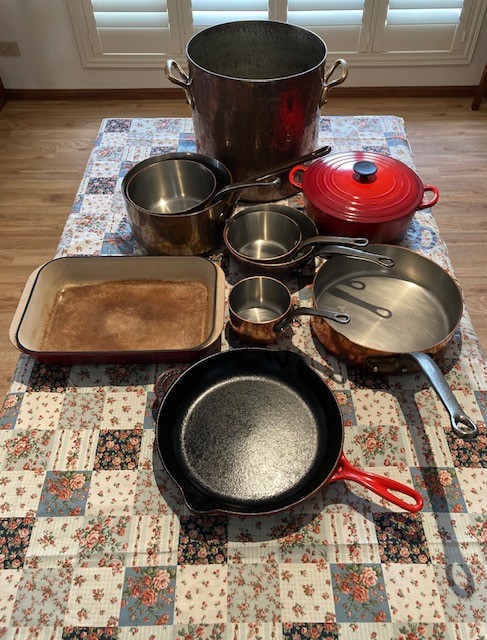
If I had to reduce my luggage allowance for our Elba exile, the three apparatus I would take, would be the two sauteuses and the cocotte.
Roger W. had a brilliant idea about pans that did not make the list. Things I would miss: Two steel crepe pans and a Rondeau. Alas, no crepes on Elba!
What about you?
Please contribute! You can leave comments at the end of the post, or to add your choices to the post itself, please use the contact form below and I will append your input to this page. (Please know that I am the only person who will receive your message, and I will not use your email address for any other purpose than to write you back in the event that I have questions.)
Thank you!
